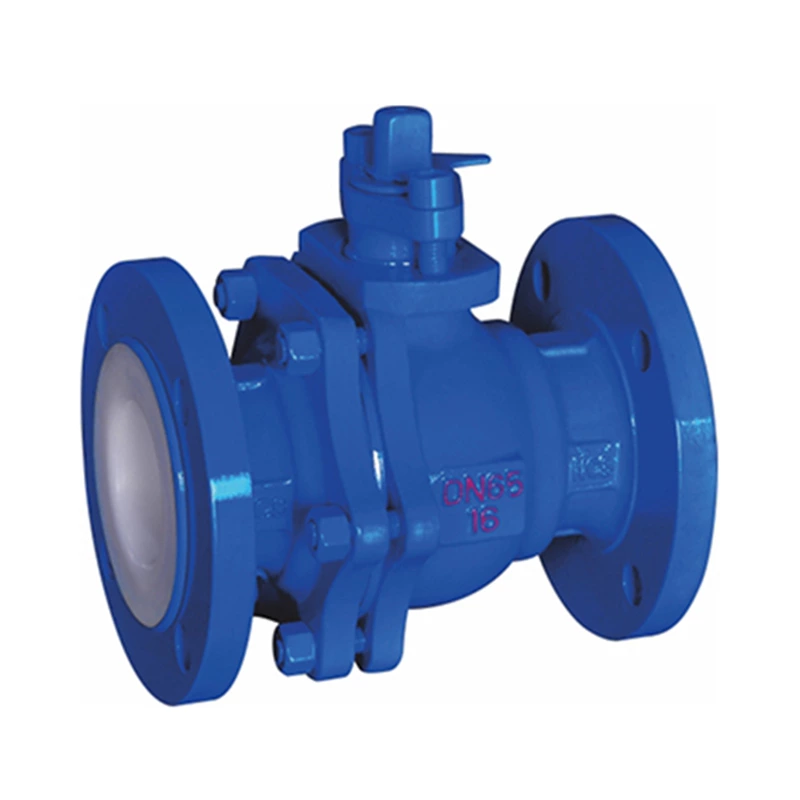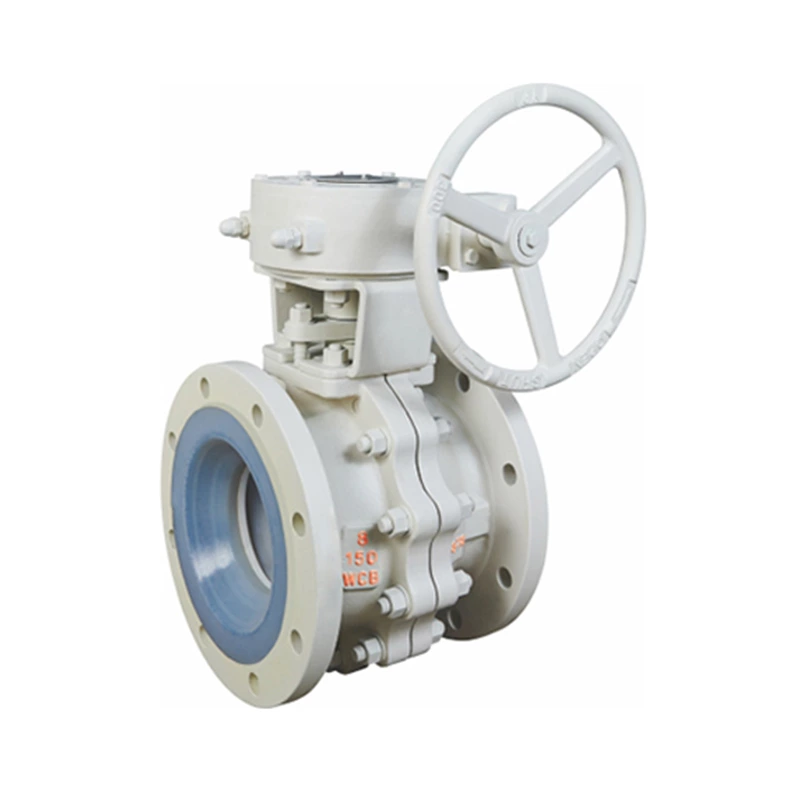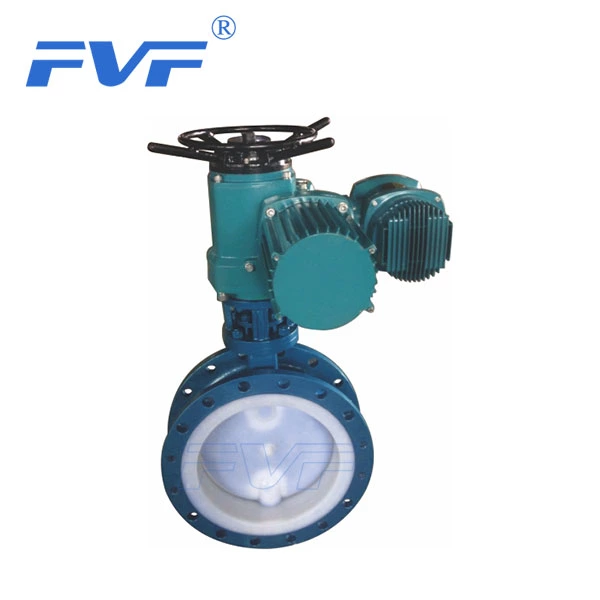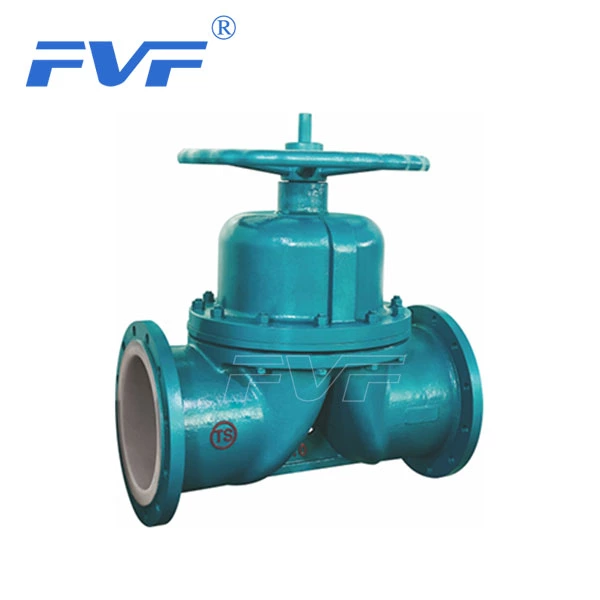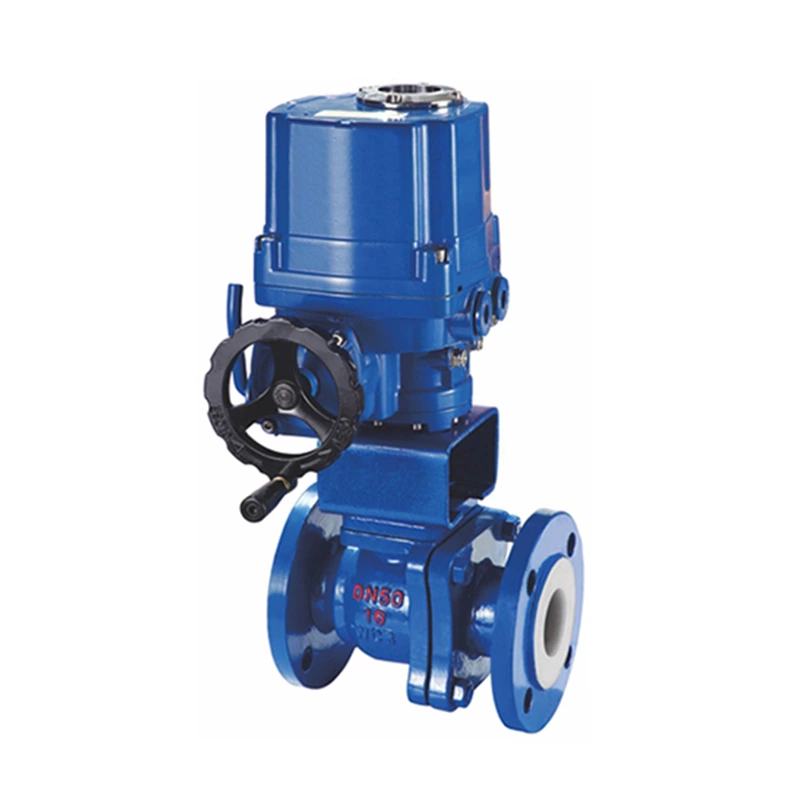Valve Models And Classifications
The Lined Valve model should usually indicate the valve type, drive mode, connection form, structural characteristics, sealing surface material, valve body material and nominal pressure. The standardization of valve models facilitates the design, selection and sales of valves. Today, there are more and more types and materials of valves, and the compilation of valve models is becoming more and more complicated. Although my country has a unified standard for the compilation of valve models, it is increasingly unable to meet the needs of the development of the valve industry. At present, valve manufacturers generally adopt a unified numbering method; where a unified numbering method cannot be adopted, each manufacturer shall formulate a numbering method according to its own needs.
The "Valve Model Compilation Method" is applicable to gate valves, throttle valves, ball valves, butterfly valves, diaphragm valves, plunger valves, plug valves, check valves, safety valves, pressure reducing valves, and steam traps for industrial pipelines. It includes the compilation of valve models and the naming of valves.
Valves have a wide range of uses, a wide variety of types, and many classification methods. In general, they can be divided into two categories:
The first type of automatic valve: a valve that acts automatically by relying on the ability of the medium (liquid, gas) itself. Such as check valves, safety valves, regulating valves, steam traps, pressure reducing valves, etc.
The second type of driven valves: valves that are operated manually, electrically, hydraulically, or pneumatically. Such as gate valves, stop valves, throttle valves, butterfly valves, ball valves, plug valves, etc.
In addition, there are several ways to classify valves:
First, according to the structural characteristics, according to the direction in which the closing part moves relative to the valve seat, it can be divided into:
Valve
1. Gate type: The closing part moves along the center of the valve seat.
2. Gate type: The closing part moves along the center of the vertical valve seat.
3. Plug and ball type: The closing part is a plunger or a ball, which rotates around its own center line.
4. Swing type; the closing part rotates around the axis outside the valve seat.
5. Disc type: The disc of the closing part rotates around the axis inside the valve seat.
6. Sliding valve type: The closing part slides in a direction perpendicular to the channel.
According to the structural type, they are mainly:
Plug valve, gate valve, stop valve, ball valve - used to open or close the flow of medium in the pipeline.
Check valve (including bottom valve) - used to automatically prevent the backflow of medium in the pipeline. Throttle valve - used to adjust the flow of pipeline medium.
Butterfly valve - used to open or close the medium in the pipeline. It can also be used for regulation.
Safety valve - used in boilers, container equipment and pipelines. When the medium pressure exceeds the specified value, it can automatically remove the excess medium pressure to ensure the safety of production operation.
Pressure reducing valve - used to automatically reduce the medium pressure in pipelines and equipment. When the medium passes through the gap of the valve disc, resistance is generated to cause pressure loss, achieving the purpose of pressure reduction.
Trap - used to automatically remove condensate from steam pipelines to prevent steam loss or leakage.
II. According to the purpose, according to the different uses of valves, they can be divided into:
1. Opening and closing: used to connect or cut off pipeline media, such as stop valves, gate valves, ball valves, butterfly valves, etc.
2. Check valve: used to prevent medium backflow, such as check valve.
3. Regulating valve: used to regulate medium pressure and flow, such as regulating valve and pressure reducing valve.
4. Distribution valve: used to change medium flow direction and distribute medium, such as three-way plug, distribution valve, slide valve, etc.
5. Safety valve: used to discharge excess medium when medium pressure exceeds the specified value to ensure the safety of pipeline system and equipment, such as safety valve and emergency valve.
6. Other special uses: such as steam trap, vent valve, sewage valve, etc.
Classification by use and function
Stop valve type - mainly used to cut off or connect medium flow. Including gate valve, stop valve, diaphragm valve, ball valve, plug valve, butterfly valve, plunger valve, ball plug valve, needle instrument valve, etc. Regulating valve type - mainly used to regulate medium flow, pressure, etc. Including regulating valve, throttle valve, pressure reducing valve, etc.
Check valve type - used to prevent medium backflow. Including check valves of various structures.
Diverter valves - used to separate, distribute or mix media. Including distribution valves and steam traps of various structures.
Safety valves - used for safety protection when the medium is overpressured. Including various types of safety valves.
III. According to the driving method, it can be divided according to different driving methods:
1. Manual: with the help of handwheels, handles, levers or sprockets, etc., there is human drive. When transmitting large torque, it is equipped with worm gears, gears and other speed reduction devices.
2. Electric: driven by motors or other electrical devices.
3. Hydraulic: driven by (water, oil).
4. Pneumatic; driven by compressed air.
IV. According to the pressure, it can be divided according to the nominal pressure of the valve:
1. Vacuum valve: valve with absolute pressure <0.1MPa, that is, 760mm mercury column, usually expressed in mm mercury column or mm
water column.
2. Low-pressure valve: valve with nominal pressure PN≤1.6MPa (including steel valve with PN≤1.6MPa)
3. Medium-pressure valve: valve with nominal pressure PN2.5-6.4MPa.
4. High-pressure valve: valve with nominal pressure PN10.0-80.0MPa.
V. According to the temperature of the medium, it can be divided according to the medium temperature when the valve is working:
1. Ordinary valve: valve suitable for medium temperature -40~425℃.
2. High-temperature valve: valve suitable for medium temperature 425~600℃.
3. Heat-resistant valve: valve suitable for medium temperature above 600℃.
4. Low-temperature valve: valve suitable for medium temperature -40~-150℃.
5. Ultra-low-temperature valve: valve suitable for medium temperature below -150℃.
Sixth, according to the nominal diameter, according to the nominal diameter of the valve, it can be divided into:
1. Small-diameter valve: valve with a nominal diameter of DN<40mm.
2. Medium-diameter valve: valve with a nominal diameter of DN50~300mm.
3. Large-diameter valve: valve with a nominal diameter of DN350~1200mm.
4. Extra-large-diameter valve: valve with a nominal diameter of DN≥1400mm.
Seventh, according to the connection method with the pipeline, according to the connection method between the valve and the pipeline, it can be divided;
1. Flange-connected valve: valve body with flange, valve connected to the pipeline by flange.
2. Threaded valve: valve body with internal or external threads, valve connected to the pipeline by threads.
3. Welded valve: valve body with weld, valve connected to the pipeline by welding.
4. Clamp-connected valve: valve body with clamp, valve connected to the pipeline by clamp.
5. Card sleeve connection valve: valve connected with pipe by card sleeve.
Classification by valve body material
Non-metallic material valves - such as ceramic valves, glass fiber reinforced plastic valves, plastic valves.
Metallic material valves - such as copper alloy valves, aluminum alloy valves, lead alloy valves, titanium alloy valves, monel alloy valves, cast iron valves, carbon steel valves, cast steel valves, low alloy steel valves, high alloy steel valves.
Metal body lined valves - such as lead lined valves, plastic lined valves, enamel lined valves.
General classification method
This classification method is divided according to principle, function and structure, and is the most commonly used classification method internationally and domestically. Generally divided into gate valves, stop valves, throttle valves, instrument valves, plunger valves, diaphragm valves, plug valves, ball valves, butterfly valves, check valves, pressure reducing valves, safety valves, steam traps, regulating valves, foot valves, filters, drain valves, etc. Since valves are widely used, they also play a great role. For example: in power plants, valves can control the operation of boilers and steam turbines; in petroleum and chemical production, valves also control the normal operation of all production equipment and process flows. The same is true in other departments. Despite this, valves are often overlooked compared to other products. For example: when installing machinery and equipment, people often focus on the main machinery and equipment
, such as compressors, high-pressure vessels, boilers, etc.; some are improperly selected... These practices will reduce the overall production efficiency or stop production, or cause various other accidents. Therefore, the selection, installation, and use of valves must be done conscientiously and responsibly. This is especially true for modern industrial production and construction.
There are many domestic manufacturers of valves, and most of the connection sizes are not uniform. They are mainly divided into the following categories:
1) General category based on JB/T2203-1999 "Valve Structure Length". At present, most domestic valve manufacturers design and produce according to this standard. Such as Shanghai Yaze Valve Factory, Zhejiang Luofu Boiler Accessories Factory, Shanghai Liangzhong Valve Factory, Shanghai Valve Factory, Kaifeng High-Pressure Valve Factory, etc. However, this standard is not perfect, and the specifications are not complete. The maximum nominal diameter of the micro-opening safety valve is DN NI 00, and the maximum nominal diameter of the full-opening safety valve is DN200, and the two specifications of DN65 and DN125 are missing in the middle. According to the valve specifications produced by the factory and the information available, the current nominal diameter of the micro-opening safety valve is up to DN250, and the nominal diameter of the full-opening safety valve is up to DN400. After investigation, the connection dimensions of each manufacturer are not uniform. For example, the DN150 full-opening safety valve is different from that of Zhejiang Luofu Boiler Accessories Factory, Shanghai Valve Factory and Shanghai Liangzhong Valve Factory. In order to have a unified standard, users can interchange the same specifications when selecting and installing. It is recommended that the Hefei General Machinery Research Institute revise JB/T2203-1999 "Valve Structure Length". It is recommended that design institutes and users select according to the standard, and valve manufacturers design and manufacture according to the standard.
